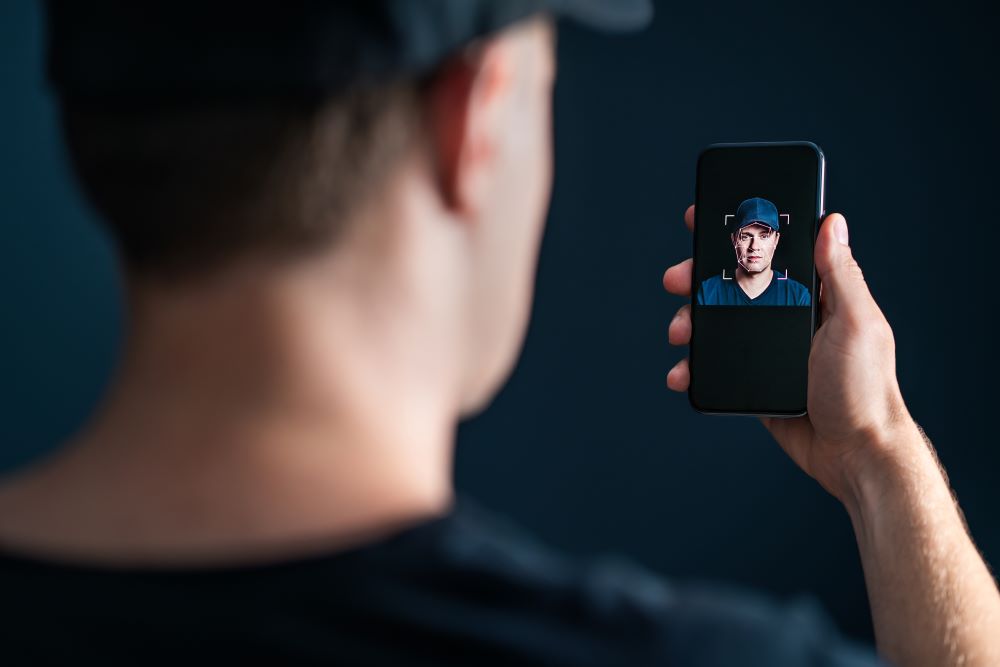How to spot a deepfake scam

You might have heard the term ‘deepfake’ a lot recently, and with good reason. As the use of AI grows, so to have the number of deepfake videos across social media. Identity verification company Onfido reports that there was a 3,000% increase in the use of deepfake attempts and identity fraud in 2023 compared to 2022.
But what is a deepfake video? In short, it’s a video made using artificial intelligence (AI) to create content of people saying or doing things that never actually happened. The likes of Martin Lewis, Holly Willoughby and Taylor Swift are amongst those most impersonated.
The majority of these scams seem to be linked to dodgy cryptocurrency schemes, where victims can be scammed out of huge figures! It’s really worrying, especially with how sophisticated criminals are when it comes to this kind of technology.
Today, we’re delving deeper into the world of deepfakes to help you learn how to spot them.
How to spot a deepfake video?
Knowledge is power when it comes to sharing your data – or money – on social media platforms. It’s important to know that, across Facebook, Instagram and other sites, there are huge numbers of deepfake videos, posing as real content.
They often promote scam products or fake investment sites, and lead you to phishing websites, where your data can be harvested. In some videos, genuine footage of the celebrities is used. But the audio about the dodgy product, has come from an AI voice cloning software and the scammers edit lip movements to sync it together. This makes it really convincing that the person in the video is endorsing something, when they aren’t’.
Other times, footage is manipulated to make the person in the video say something they never have. For example, you might see fake clips of Elon Musk endorsing investment platforms. But in reality, the video is from an unrelated podcast appearance.
Key signs it’s a deepfake video
So, what signs should you be on the lookout for? Deepfakes can be convincing, but here’s some pointers.
Low quality lip-syncing
Pay attention to the person’s mouth in the video. Does the sound match up with how their lips are moving? Are there weird glitches or unnatural, jumpy movements. This could indicate the audio and video have been spliced together, to create a false impression.
Robotic voices
Listen out for strange background noises, and how the voice sounds. ‘AI voice’ can sound slightly robotic and stilted, as if the words are being read individually, rather than a full, flowing sentence. But this isn’t always the case, as recent AI footage of Gareth Southgate attests to.
The devil’s in the detail
Pay attention to the details and overall quality of the video. Is there any blurring, of the background for example. Does the person’s hair and skin tone look human, or perhaps it’s overly pixelated? These intense edits can be a clue that the video is fake.
Unnatural facial expressions
As convincing as AI is, it can actually struggle to replicate that which makes us human. Deepfake videos often have strange facial expressions, such as frozen eyebrows or get weird blinks, shutting one eye at a time. It sounds ridiculous, but examine the video carefully for these quick, yet telling giveaways.
Use context and common sense
It’s easy to get sucked into social media and lose perspective. And these scam videos are designed to be engaging and convincing. But try to keep a level head and ask yourself ‘is this too good to be true?’
Deepfake videos may use fake clips of the BBC or other media outlets endorsing their product, but it’s unlikely that an established broadcaster would report on an unknown promotion in this way. Have a look at the account that’s posted the video. If it’s not official, that’s another warning sign.
Other key signs of a scam are pressure tactics, such as countdowns or limited time offers that mean you must ‘act now!’ Remember, if you ever feel pressured to part with your personal details, whether it’s online, via a phone call or text, you can step away and ask a trusted friend or family member for help.
What should you do if you spot a deepfake?
The Online Safety Act passed last year, making it a legal requirement for platforms to remove harmful content. This includes scams and frauds. But organisations such as Which? are calling on Ofcom, the regulator who is enforcing these rules, to develop a proper code of conduct that puts the onus on online platforms to detect and remove scams.
If you do come across something suspect on social media, select the three dots in the top righthand corner and then click ‘Report’. If you become the victim of a scam, call your bank immediately using the number on the back of your bank card and report it to Action Fraud. If you’re in Scotland, call the police on 101.
And don’t forget, you can report scams via Which?.
Sources: Which?







